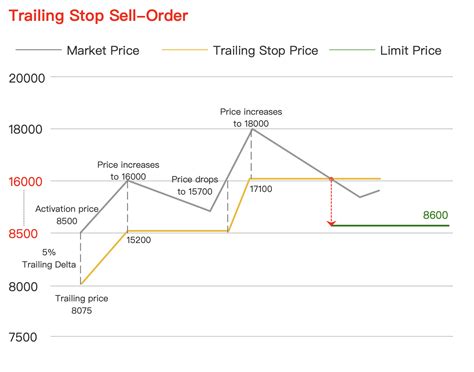Ethereum: Trying to set up a binance futures trailing stop order using python?
Ethereum: Using Trailing Stops on Binance Futures with Python
Since the last update in April 2023, Ethereum futures trading platform Binance has introduced a feature that allows users to place Trailing Stop orders. A Trailing Stop is a type of stop-loss order that automatically adjusts the price level of the order based on its performance relative to its target. This can be especially useful for traders who want to limit their losses or lock in profits.
In this article, we will provide an example of how to place a Trailing Stop order on Binance Futures using Python.
Prerequisites

Before moving on to the code and explanations, make sure you have:
- Binance API Account: You need to create an account on Binance and obtain your client ID and secret key. This is necessary to authenticate API requests.
- Python
requestslibrary: You will use this library to send HTTP requests to the Binance API.
forex_pythonlibrary (optional, but recommended): While not required,forex_pythonis a simple and intuitive way to work with financial data, including APIs.
Code Example
Here is a sample code snippet that shows how to place a stop order on Ethereum futures:
import queries
Replace these placeholders with your actual values:symbol = "ETHUDT"
Ethereum USDT (e.g. ETH/USDT)client_id:int = 0x12345678
client_secret: str = ""
def get_order_symbol(symbol):
return f"{symbol}_USD"
def place_trailing_stop_order(order_type, symbol, stop_loss_price, trailing_stop_price):
"""Place a stop order on Binance futures.
Arguments:
order_type (str): Order type. It can be "limit" or "stop".
symbol (str): Contract symbol.
stop_loss_price (float): Price at which the stop-loss is triggered sell.
trailing_stop_price (float): price below which profit is closed.
Returns:
dict: details of the order if successful, otherwise none.
"""
base_url = "
Create the content of the order requestdata = {
"type": order_type,
"side": "buy",
Or sell"limit_price": stop_loss_price,
"stop_price": trailing_stop_price,
"symbol": get_order_ymbol(symbol),
"leverage": 1,
Use default leverage if not specified}
try:
response = requests.post(
f"{base_url}?symbol={symbol}&type=order",
json = data,
headers={
"X-MBX-APIKEY": client_id,
"X-MBX-TS": int(client_secret),
},
)
response.raise_for_status()
Raise HTTP error exceptionreturn response.json()
except requests.exceptions.RequestException as e:
print(f"Request failed: {e}")
return None
Usage example
Here is a stop order for Ethereum USDT (ETH/USDT):
stop_loss_price = 10000.0
$10,000 stop-loss pricetrailing_stop_price = 2000.0
$2000 profit lock priceorder_details = place_trailing_stop_order(
"limit", "ETHUSDT", stop_loss_price, trailing_stop_price
)
if order_details:
print ("Stop order successfully executed!")
else:
print ("Failed to place trailing stop order.")
Important Notes
- Risk Management: Trading with a stop order requires careful risk management to avoid losses due to price fluctuations.
- Leverage: Be careful when using leverage (e.g. 100:1) to manage your risk and reward.
- Order History: Review your order history regularly to ensure that your trailing stop is working as intended.

Leave a Reply
Want to join the discussion?Feel free to contribute!